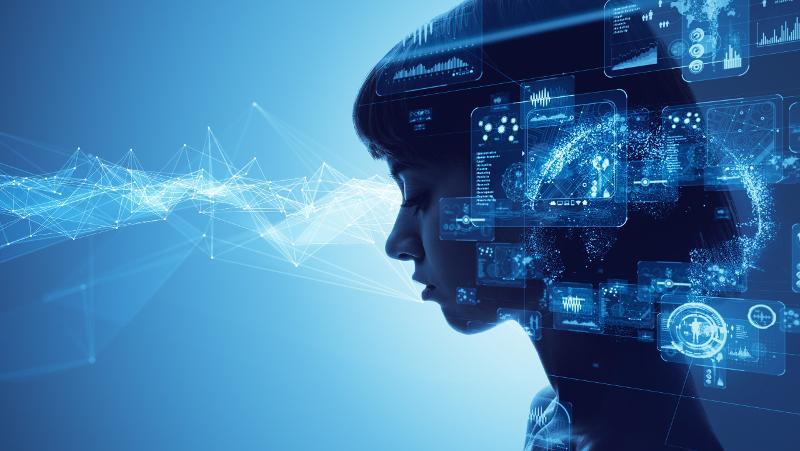Technology is at the forefront of revolutionizing how we approach mental healthcare. With innovations like telehealth apps, AI-driven therapy, and virtual reality treatments, technology is improving access to care and providing personalized treatment options. In this article, we will explore the human-first approach in behavioral health and how technology is shaping the future of mental healthcare.
Improved Access to Care with Telehealth Apps
Discover how telehealth apps are revolutionizing access to behavioral health care.
Telehealth apps have transformed access to mental health care. Individuals no longer have to struggle with transportation constraints or limited therapist availability in their area. With telehealth apps, people can connect with mental health providers from the comfort of their own homes or even while on the go.
This level of convenience and flexibility opens doors for people who otherwise would not have access to the care they need. Whether living in a rural area or facing difficulty leaving their home, telehealth apps ensure that mental health support is available whenever and wherever it’s needed.
Advanced Diagnosis and Treatment with AI-Driven Therapy
Explore how innovative AI-driven therapy is transforming the diagnosis and treatment of behavioral health conditions.
AI-driven therapy is revolutionizing behavioral health care by analyzing extensive health data and research. By leveraging this technology, mental health conditions can be diagnosed more accurately and treatment plans can be more tailored and effective.
Additionally, AI-driven chatbots and virtual therapists offer immediate support and interventions. These tools provide accessible and timely care, helping individuals manage their mental health in real-time.
Virtual Reality: A New Frontier for Behavioral Health Treatments
Discover how virtual reality is expanding treatment options for various behavioral health conditions.
Virtual Reality (VR) is transforming the treatment of phobias, post-traumatic stress disorder (PTSD), and anxiety disorders. Through VR therapy, individuals can engage in controlled and safe exposure therapy without being physically present in the triggering environment.
This innovative approach provides patients with a unique opportunity to face their fears in a protected virtual environment, leading to impactful and long-lasting results. Virtual reality opens doors to new avenues of behavioral health treatments and offers hope for individuals seeking relief from their mental health conditions.
Monitoring Mental Health with Wearables
Find out how wearables are enhancing behavioral health outcomes by monitoring physical activity and heart rate.
Wearable devices, such as Apple Watches and the Google Pixel Watch, offer invaluable insights into mental health conditions. These devices can detect increased heart rates, acting as warning signs for heightened anxiety or potential panic attacks for individuals with anxiety disorders.
Moreover, wearables can track physical activity levels, assisting in the monitoring and management of depressive episodes. Sudden drops in physical activity over an extended period may indicate a deteriorating mental health state.
By providing real-time data and alerts, wearables empower individuals in managing their mental health and seeking appropriate support when necessary. They serve as valuable tools for improving behavioral health outcomes and overall well-being.
The Importance of the Human Connection in Behavioral Health
Explore why the human connection is crucial in behavioral health care.
Although technology plays a vital role in improving mental healthcare, the human connection remains irreplaceable. Body language, tone of voice, and other non-verbal communication elements facilitate effective counseling sessions, creating a strong provider-patient relationship.
In instances where a person is reaching out for help, direct interaction with another human being can significantly impact the path to care. Smart intake applications or AI-based systems may streamline administrative processes but cannot replace the empathy, understanding, and personalized support provided by another human.
Ensuring a human-first approach acknowledges the uniqueness of each individual's journey and the importance of a truly person-centered approach to mental health care.
Conclusion
The integration of technology in behavioral healthcare has led to significant advancements in improving access to care and developing innovative treatment options. Telehealth apps have connected individuals with mental health support from anywhere, reducing barriers caused by distance and transportation. AI-driven therapy and virtual reality treatments are allowing for more accurate diagnoses and personalized interventions. Wearables supporting mental health monitoring are empowering individuals to take an active role in their well-being. However, it is essential to maintain a human-first approach, as the human connection and personalized care remain vital factors in behavioral health. By combining technology and the human touch, we can create a future where mental healthcare is accessible, effective, and compassionate.
FQA :
Can technology replace healthcare providers in behavioral health?
While technology plays an important role in behavioral health, it cannot replace healthcare providers. The human connection, empathy, and personalized support offered by professionals are irreplaceable factors in the therapeutic journey. Technology can complement their work and enhance treatment, but it cannot fully replace the critical role of healthcare providers.
What are the advantages of using telehealth apps in behavioral health?
Telehealth apps provide numerous benefits in behavioral health: increased accessibility, the flexibility to receive care from anywhere, reduced transportation barriers, and convenience for individuals who have difficulty leaving their homes or live in remote areas. These apps facilitate real-time communication with mental health providers, improving access and ensuring timely support for those in need.
Are wearables effective in monitoring mental health conditions?
Wearables, such as Apple Watches and Google Pixel Watches, can be effective tools in monitoring mental health. They track physical activity and heart rate, providing valuable insights into anxiety, depression, and overall well-being. Wearables can serve as early detection systems, providing individuals with timely warnings for heightened anxiety levels or potential depressive episodes, enabling them to seek appropriate support.

